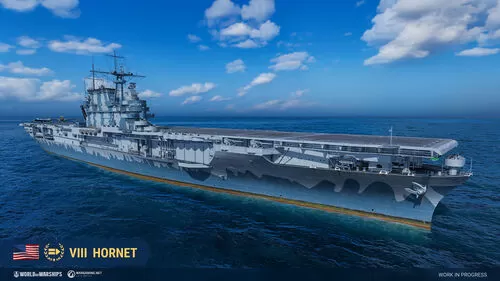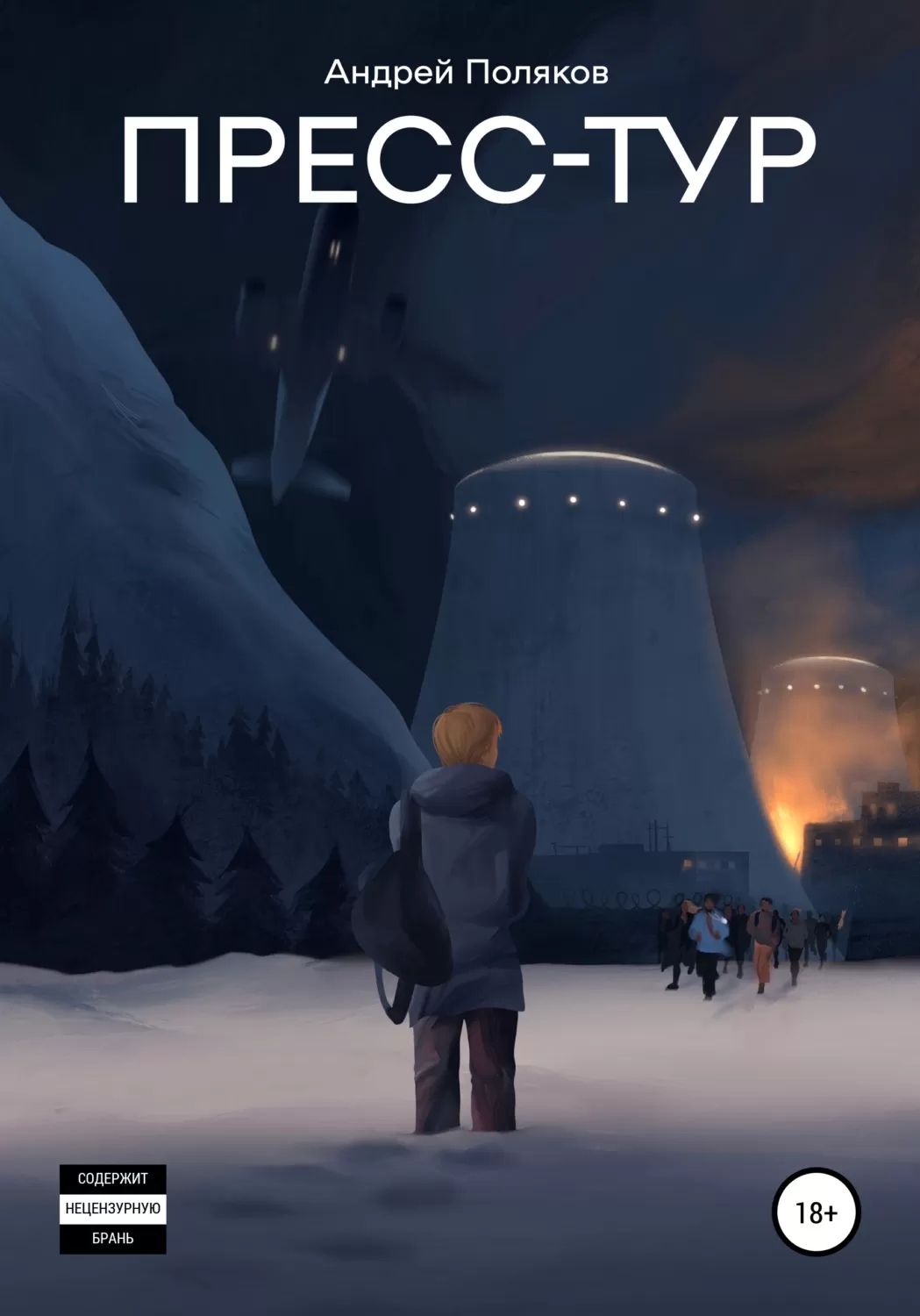
USS Hornet, part 2
The destroyer "Russell" raises the last surviving aircraft carriers "Hornet" out of the water. Photo NHHC
At 10:25 a.m., the aircraft carrier was drifting in smoke, listing to starboard. The entire attack lasted only a quarter of an hour. The cruisers and destroyers formed a protective ring around the Hornet and circled counterclockwise at 23 knots, waiting for further developments.
In the mid-30s, the command of the US Army Air Corps (USAAC) began to realize the weaknesses of their fighters, which, in terms of design, characteristics and weapons, began to stand out more and more clearly against the background of world leaders. Therefore, it was decided to initiate a program for the acquisition of a new high-performance fighter (pursuit). The key to success was a powerful liquid-cooled inline engine. Although due to the presence of an extensive cooling system (radiators, nozzles, tanks, pumps), such engines were more complex and prone to damage than air-cooled radial engines (installation flight and loss of coolant excluded the aircraft from combat), but they had a much smaller area cross-section, which made it possible to improve the aerodynamic development of the airframe and reduce drag and, thus, improve performance. The leading European countries in the development of aviation technology - Great Britain, France, Germany - used in-line engines to propel their new types of fighters.
The greatest interest among the military was caused by the Allison V-12 1710-cylinder in-line liquid-cooled engine. One way or another, at that time it was the only American engine of its kind that could meet the expectations of the military. The specially designed B-1710-C1 engine developed 1933 hp in 750, and four years later successfully passed 150-hour bench tests, delivering a constant power of 1000 hp at sea level. at 2600 rpm. Allison engineers expected to increase power to 1150 hp in a short time. This prompted USAAC to recognize the V-1710 C-series engine as the main powertrain for a new generation of combat aircraft, especially fighters.
In early May 1936, specialists from the logistics department of the Wright Field Air Corps (Ohio) formulated the initial requirements for a new fighter. Maximum speed set at at least 523 km/h (325 mph) at 6096 m and 442 km/h (275 mph) at sea level, flight duration at maximum speed one hour, climb time 6096 m - less than 5 minutes, run-up and roll-out (to the target and over the target 15 m high) - less than 457 m. However, technical specifications for the industry were not issued, because The USAAC is discussing the appointment of a new fighter and how to achieve such high performance. It was determined that its main task would be to fight heavy bombers flying at ever higher altitudes. Therefore, the question of using one or two engines and equipping them with turbochargers was considered. The term "pursuit interceptor" appeared for the first time. It turned out that the aircraft did not need good maneuverability, since it would not engage in maneuverable air combat with enemy fighters. At the time, it was assumed that long-range bombers would not have fighter escorts. However, the most important were the rate of climb and maximum speed. In this context, a twin-engine fighter with twice the power of the propulsion system for less than twice the weight, dimensions and drag coefficient seemed to be the best choice. Also discussed were issues of increasing the maximum allowable overload coefficient of the structure from g + 5g to g + 8–9 and arming the aircraft with large-caliber guns as a much more effective weapon against bombers than machine guns.
Meanwhile, in June 1936, the USAAC ordered the production of 77 Seversky P-35 fighters, followed by 210 Curtiss P-36A fighters the following month. Both types were powered by Pratt & Whitney R-1830 radial engines and on paper had top speeds of 452 and 500 km/h (281 and 311 mph) respectively at 3048 m. V-1710 powered target fighter. In November, the Materials Department slightly changed the requirements for a single-engine interceptor. The maximum speed at sea level has been reduced to 434 km/h (270 mph), flight duration has been increased to two hours, and the climb time to 6096 m has been increased to 7 minutes. At that time, specialists from the General Staff of the Air Force (GHQ AF) at Langley Field, Virginia, joined the discussion and proposed an increase in the maximum speed to 579 km / h (360 mph) at an altitude of 6096 m and 467 km / h. (290 mph) at sea level, reducing the duration of flight at maximum speed back to one hour, reducing the climb time from 6096 m to 6 minutes and reducing the take-off and roll-out time to 427 m. After a month of discussion, the GHQ AF requirements were approved by the department material resources.
Meanwhile, the May head of the USAAC, General Oscar M. Westover, approached Secretary of War Harry Woodring with a proposal to purchase prototypes of two interceptors - with one and two engines. After receiving approval for the implementation of the program, on March 19, 1937, the Materiel Department issued the X-609 specification, specifying the tactical and technical requirements for a single-engine interceptor (earlier, in February, it issued a similar X-608 specification). -38 for a twin-engine fighter, leading to the Lockheed P-608). It was addressed to Bell, Curtiss, North American, Northrop and Sikorsky (X-609 - Consolidated, Lockheed, Vought, Vultee and Hughes). The best designs submitted in each group had to be built as prototypes, which in turn had to compete against each other. Only the winner of this competition had to go into series production. In response to the X-1937 specification, only three firms submitted their proposals: Bell, Curtiss and Seversky (the latter was not previously taken into account, and the intention to participate in the competition was not submitted until the beginning of 18). North American, Northrop and Sikorsky dropped out of the competition. Bell and Curtiss submitted two each, while Seversky submitted five. Bell's designs were received by the materiel department on May 1937, XNUMX.
In mid-August, specialists from the Air Corps Directorate began to analyze the submitted draft designs. A project that did not meet at least one requirement was automatically rejected. Such was the fate of Seversky's Model AR-3B project, whose estimated climb time to a height of 6096 m exceeded 6 minutes. Bell Model 3 and Model 4, Curtiss Model 80 and Model 80A and Seversky AP-3 in two versions and AP-3A projects remained on the battlefield. The Bell Model 4 achieved the highest performance rating, followed by the Bell Model 3 and the third, the Curtiss Model 80. The rest of the projects did not receive even half of the maximum possible number of points. The assessment did not take into account the costs of preparing documentation, creating a prototype and testing the model in a wind tunnel, which in the case of model 4 amounted to PLN 25. dollars higher than the Model 3 and $15k higher than the Model 80.
